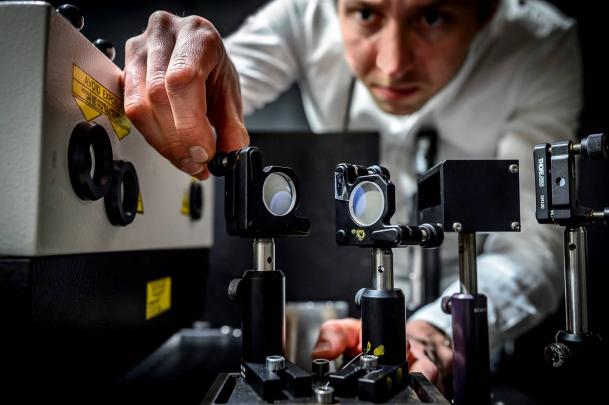A research group at Lund University, Sweden has developed a camera capable of filming at five trillion frames per second – the fastest frame rate to date – enabling it to capture events as short as 0.2 trillionths of a second. The new camera can therefore be used to capture incredibly rapid chemical, physical and biological processes that were previously unviewable on film.

The new camera, developed by Elias Kristensson (above) and his colleagues, is able to capture ultra-fast natural processes on film (Credit: Kennet Ruona)
High-speed cameras traditionally capture images in a one-by-one sequence; however, the new camera instead uses a set of uniquely coded laser pulses to illuminate the film subject, which are then reflected and merged into a single photograph that can be captured by the camera. An encryption key is then used to separate the images into a film sequence.
The researchers call the technology FRAME (Frequency Recognition Algorithm for Multiple Exposures) and have demonstrated it by successfully filming how light travels over a distance equivalent to the thickness of a paper. In reality, this only takes a picosecond; however, the camera was able to slow the process down by a factor of a trillion on film.
The new camera will initially be used by researchers who want to gain better insight into extremely rapid natural processes, for example explosions, plasma flashes, turbulent combustion, brain activity and chemical reactions, which take place on a picosecond and femtosecond scale.
‘Today, the only way to visualise such rapid events is to photograph still images of the process,’ remarked Elias Kristensson, a combustion physics researcher at the University. ‘You then have to attempt to repeat identical experiments to provide several still images, which can later be edited into a movie. We are now able to film such extremely short processes [without having to do this].’
Kristensson and his colleague Andreas Ehn will be using the camera to study the chemistry of plasma discharges, the lifetime of quantum states in combustion environments and biological tissue, and the initiation of chemical reactions.
According to Kristensson, in the long term, the technology will also be able to be used for both industrial and other types of application. A German company has already developed a prototype of the technology, meaning that more people will be able to use it in two years, it has been estimated.

